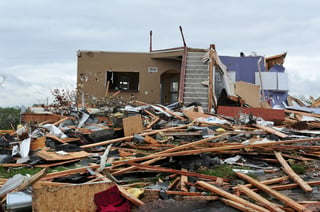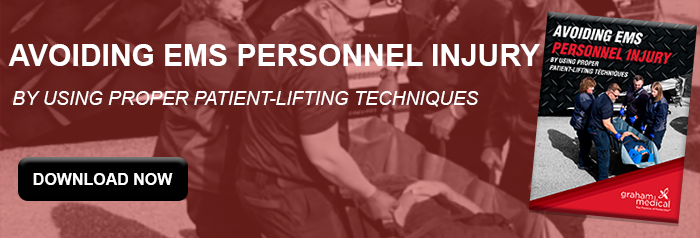 First responders are always focused on patient safety. Whether climbing five floors of an urban walk-up, navigating tiny doorways of an older house, or dealing with trash and clutter, the terrain doesn't matter as long as that EMS team can gain access to the person in need.
First responders are always focused on patient safety. Whether climbing five floors of an urban walk-up, navigating tiny doorways of an older house, or dealing with trash and clutter, the terrain doesn't matter as long as that EMS team can gain access to the person in need.
Since emergency medical care isn't limited to pristine hallways, flat ground, and 36" doorways, EMS teams can face many different safety obstacles during patient transport. Here are a couple of the more common issues that can occur.
Clutter and Trash
There is no requirement that a patient in need keeps a clean house. While most cities have a level of code enforcement to try and let emergency providers maintain access, these code violations aren't always enforced or even reported.
Clutter can be simple, such as a few household items littering a stairway, but still posing navigation hazards and the potential for service providers to trip over. An excess of belongings in a hallway can limit access to the rest of a home, in particular, medical equipment like a wheeled gurney. The added items can narrow the hallway, blocking EMS personnel from accessing the patient.
In addition, severe clutter, or hoarding, can block off access and egress to particular areas and also be the cause of many accidents in and of itself. Hoarded belongings greatly increase the potential for sprained and strained ankles, and have the potential to collapse on either the homeowner or the EMS provider.
Dated Architecture
Older housing often has charm, but dwellings built before modern building codes can be difficult to navigate. Older buildings are less likely to have elevators. No elevators mean that all patient transport must be done on stretchers going up or down flights of stairs. This poses higher risks for both the patient and the medical technician, with increased risk of falls and injury.
Doors and hallways can also be trickier in older architecture. A wheelchair, for example, will not fit through a 24-inch opening, common in 1920's architecture. Don't forget about corners either. Even if the home has wider door access, awkward corners and tight hallways can make transporting a patient more difficult, especially when stabilizing an injury.
Lifting Injuries in Medical Providers
The CDC reports 7,100 sprains and strains alone in 2014 for EMS workers, with over 21,000 reported injuries total. Maneuvering bulky medical equipment in awkward areas promotes poor lifting techniques and increases the risk of injury.
One solution to this problem adapts the transportation equipment to the environment. A flexible patient transport unit like the MegaMover® has the ability to smoothly transport patients up or down stairs and navigate awkward corners. Since this flexible stretcher has no fixed width, narrow hallways become easier to navigate.
Additionally, the MegaMover® is ergonomically designed with 14 different lifting handles. Back injuries are a common on-the-job injury in the United States but are also easy to avoid with proper lifting techniques. Establishing a good grip close to the body with easily available handles is a key to preventing back injury.
You can't choose the location where incidents occur. Patients in distress need fast and safe assistance, and the safer the emergency medical team can stay, the better care they will provide.
You can find where to get the MegaMover® by clicking here or call us at (800) 558-6765.

